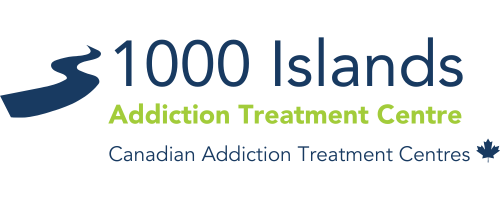
What Are the Most Addictive Drugs in the World?
It’s easy to conclude that some substances are addictive. However, how addictive are these substances? What are the most addictive drugs you need to educate your child or loved one about?
As much as there are several varieties of harmful drugs in the world, each has different addictive levels. Some are somewhat non-addictive, while others can cause addiction quickly. Ultimately, understanding the most addictive drugs available is essential. This way, you’ll be able to figure out whether you or your loved one is at great risk for addiction.
Generally, all highly addictive drugs have one significant quality. They offer pleasurable effects to your brain. It’s an effect that triggers the reward centre and makes you want more. This chain reaction is why drug addiction is rapidly becoming one of the biggest problems in Canada.
Several factors are responsible for determining what makes these substances so addictive. This includes the harm they pose to the brain, the entire body, and their easy availability to potential abusers. Here, we’ve put together a list of the most addictive drugs in the world.
6 Most Addictive Drugs
Generally, most individuals presume that hard drugs like heroin and cocaine are the most harmful and addictive types of drugs available. Undoubtedly, the addictive features in these commonly abused substances are intense. However, the frequency of use/abuse and availability are also factors to consider in their addictive potentials.
Somehow, not all highly-addictive substances are illegal. Others are legal and getting these drugs can be as easy as walking to the nearest store down the street. Some of the factors that determine the severity of the drugs and why they are some of the most addictive drugs in the world include:
- Physical dependence
- Psychological dependence
- The intensity of pleasure
Here are 6 most addictive drugs in the World:
Heroin
The first on our list of most addictive drugs is Heroin. Heroin is a class of opioids with origin from morphine. Its mode of consumption often includes sniffing, snorting, smoking, and injecting. Heroin addiction is a disorder that includes mental and behavioural changes as a result of excess heroin use.
Heroin is an illegal yet highly addictive drug. It’s one of the fastest-acting and regularly abused opiates. Itis an opioid drug made from naturally-occurring morphine taken from the seed pod of several opium poppy plants. These plants are often grown in areas like Southwest Asia, Southeast, Colombia and Mexico.
Heroin can come in the form of a brown or white powder, or a black sticky form is known as black tar heroin. Other popular names for heroin include smack, hell dust, horse, big H, etc.
Furthermore, pure heroin is a white powder with a bitter taste that widely originates in South America, and dominates the U.S. It also extends to some extent, Southeast Asia and markets east of the Mississippi River. Highly pure heroin can be snorted or smoked and is more appealing to new users. This is because it doesn’t have the stigma relating to injection drug use.
Also, Black tar heroin is considered sticky because it’s hard like coal and looks like the roofing tar. This type of heroin is popularly produced in Mexico and sold in the U.S. areas around the west of the Mississippi River.
The dark colour of black tar heroin results from its crude processing methods. This poor processing method is why it also contains impurities. Impure heroin is often dissolved, diluted, and injected into muscles, under the skin, or veins.
In its pure form, heroin is a fine white powder that is bitter to taste and readily dissolves in water. In the streets, the colour of heroin varies according to the additives that have been added to it.
Substances like sugar and powdered milk are added to increase its street weight to increase retail sales. In recent times, fentanyl is being added to increase heroin’s potency. According to the CDC, fentanyl is a substance that is one hundred times more deadly than morphine
Symptoms of Heroin Addiction
Generally, symptoms of heroin addiction can appear immediately after last use or between 6-30 hours later. However, this may vary depending on how long you’ve been taking the drug.
You may experience prolonged symptoms even after 72 hours of your last dose. These symptoms can extend up to a week, depending on your level of addiction.
Additionally, the symptoms you’ll experience often depend on the addiction level you’re experiencing. Several factors may dictate the duration in which you’ll go through the addiction symptoms. This is why everyone experiences addiction symptoms differently.
Here are a few symptoms of heroin addiction:
- Dry mouth
- Flushed skin
- Constricted pupils
- Slow breathing
- Falling asleep suddenly
- Vomiting
- Itching
- Loss of self-control
- Nausea
- Constipation
- Slurred speech
- Yawning often
Marijuana
Typically, marijuana is a psychoactive substance capable of altering your perception. It contains tetrahydrocannabinol (THC), the primary chemical compound that stimulates its effects. Furthermore, the effects of marijuana may vary from person to person, depending on its mode of consumption.
A medical professional can easily diagnose marijuana addiction in an individual. However, it’s noteworthy to know that its addiction possesses a significant adverse risk on the individual’s life. People can cultivate a mental dependence on cannabis in the same way they do with other addictive substances. As such, it is one of the most addictive drugs in the world.
When a person uses marijuana, cannabinoid receptors present in the brain become active via the neurotransmitter known as Anandamide. Tetrahydrocannabinol then blocks and mimics the actions of natural neurotransmitters like Anandamide.
This extends to the point where your body no longer generates enough Anandamide on its own. It is at this point that marijuana abuse and addiction sets in.
Symptoms of Marijuana Addiction
Ultimately, the chemical substance in weed reprograms your brain to require it more to feel normal. When you finally decide to stop giving your body more THC, withdrawal symptoms may kick in.
This is a result of a lack of Anandamide in your body. As with other addictive drugs in the world, wanting to quit marijuana usage but not being able to quit is one of the top indicators of marijuana addiction.
Here are a few symptoms of marijuana addiction:
- Consuming excessive cannabis
- Bloodshot eyes
- Weight gain
- Impaired coordination
- Increased appetite
- Nervous or paranoid behaviour
- Inability to slow down or stop using marijuana
- Spending too much time high on weed
- Slowed reaction time
- Dry mouth
- Anxiety
- Memory impairment
- Dizziness
- Lack of motivation
- Ignoring your daily activities
- Using marijuana as a determining factor on your outings
Related Article: The Most Commonly Abused Prescription Drugs in the World
Cocaine
Cocaine is a potent stimulant and a prevalent party drug that offers euphoric feelings and increased energy. Its unique effects are why cocaine is one of the most addictive drugs in the world.
This makes it the most sought-after type of drug for some people. Cocaine stimulates the brain’s reward system by releasing high levels of dopamine, which then encourages regular use.
Somehow, cocaine is legal for medical use in the hospital. However, it’s never prescribed for patients. Generally, it’s used at nightclubs, parties, getaways and individual homes.
Over time, cocaine abusers start taking higher amounts of the drug. Increasing the dosage of cocaine also increases the risk of overdose and leads to psychosis, stroke, cardiac arrest, and heart failure in serious cases. This makes cocaine highly dangerous in addition to being highly addictive.
Also, physical dependence increases as your body adapt more to the cocaine in your system. Through this adaptation, your brain will start asking for cocaine to function well and feel normal again. The moment it doesn’t get the substance at the desired level, withdrawal symptoms will commence.
Symptoms of Cocaine Addiction
Addiction reveals a failure to quit using a drug despite the personal distress it brings. It’s a lifelong dysfunction of a person’s mental well-being that involves memory, motivation, and reward.
Also, addiction is about how your body craves a behaviour or substance. Here are a few symptoms of cocaine addiction:
- Dilated pupils
- Over-excitement
- Mood swings
- Depression
- Financial problems
- Legal issues
- Paranoia
- Overconfidence
- Loss of appetite
- White powder around nostrils
- Irritability
- Missing work or being late work, date, or meeting
- Runny nose or frequent sniffles
Amphetamine
Generally, Amphetamines are psychiatric drugs that alter the chemical structure of the brain. This is possible because your mind will adjust to the drug and its effect. Essentially, your brain may assume it’s not functioning correctly and try to adjust to suit the changes.
One of the most addictive drugs in the world, Amphetamines are a class of stimulant-type drugs known for increasing energy and blood pressure, heart rate, and body temperature.
Typically, Amphetamines refer to prescription drugs like Adderall (which consist of Amphetamine and dextroamphetamine), Methylin, and Concerta.
These drugs are sometimes sold illegally. However, both street and prescribed amphetamines can be abused and as such cause use disorder. Generally, methamphetamine is the most frequently misused amphetamine.
Amphetamine dependence, a type of stimulant use disorder, occurs when you need the drug to function daily. You’ll experience symptoms of withdrawal if you’re dependent and you abruptly stop using the drug. At this point, the best option is to enroll at an Amphetamine addiction treatment centre.
In the medical world, Amphetamines are often used to treat ADHD (Attention Deficit Hyperactivity Disorder). These drugs are unlikely to cause addiction when prescribed by a doctor and taken at the intended dosage. However, when they are abused indiscriminately, Amphetamines can wreak havoc on your brain and body.
Amphetamine withdrawal is a class of metabolic trauma your body experiences when you stop using the drug after being dependent on it. The feelings come in a different range of psychological and physiological symptoms.
These signs are hazardous and may continue for weeks. It can also lead to mental illness and physiological disorders if managed poorly. This stresses the importance of addiction treatment services.
Symptoms of Amphetamine Addiction
Amphetamine addiction comes with a mix of mental and physical effects that you may experience after overtime. If you experience any of these symptoms, it is best to seek emergency assistance immediately. If left unmanaged, these complications may have potentially disastrous consequences.
Here are some of the symptoms of Amphetamine addiction:
- Increased blood pressure and heart rate
- Insomnia
- Mood swings
- Anxiety and paranoia
- Missing pills from a doctor’s prescription
- Weight loss and reduced appetite
- Loss of interest in previous favourite activities
- Digestive upset
- Auditory, visual, or tactile hallucinations
- Difficulties with keeping relationships and changes in the group of friends
- Inability to maintain home, school, or work responsibilities
- Inability to keep up with work, school, or home responsibilities
- Much of the person’s time spent seeking or using the drug, etc.
Nicotine
Generally, nicotine is a greatly addictive substance found in the tobacco plant. The addiction to nicotine is physical as well as mental. This means chronic users tend to crave the substance physically and mentally.
Addiction to nicotine also has a behavioural effect. Individuals often become dependent on actions that involve using tobacco. Furthermore, such individuals may end up becoming accustomed to tobacco use in a certain scenario like when under stress or after meals.
Nicotine is majorly consumed by inhaling tobacco or cigarette smoke. Other ways to smoke tobacco include cigars and pipes. However, smokeless tobacco is usually held in the mouth or inhaled through the nose as a powder.
Tobacco is harmful to your health. According to Lung.CA, an estimated 45,000 Canadians end up dead every year as a result of smoking. Numerous others are suffering from chronic diseases related to smoking. Despite prevention efforts and public health education, approximately 15 percent of Canadians are smokers.
Symptoms of Nicotine Addiction
Generally, nicotine is the chemical substance in tobacco that makes you keep smoking. It reaches the brain within seconds of taking a small puff. There, nicotine alters the release of neurotransmitters in the brain and increases their release. This, however, aids your mood regulation and behaviour.
As such, dopamine gets released into the centre of the brain causing feelings of satisfaction, pleasure, and good mood. However, the more you smoke, the more nicotine you need to feel good. Nicotine quickly becomes part of your daily routine and is intertwined with your habits and feelings.
Here are some of the symptoms of nicotine addiction:
- Inability to stop using tobacco products
- Withdrawal signs start coming once you stop nicotine use
- Wanting to keep smoking even after all complications pointing to your depreciating health
The Other Opioids
Generally, opioids are a specific class of prescription drugs known by several other names. Aside from heroin mentioned above, opiates generally are one of the most addictive drugs. Yet, they are easily available.
Examples include:
- Codeine
- Morphine
- OxyContin
- Percocet
- Percodan
- Vicodin
In general, these drugs are prescriptions to help boost pain management during treatment by filling the brain’s sense of pain. In doing so, opioids also release dopamine swiftly. This is why people develop an addiction to these kinds of painkillers.
Usually, these medications are safe when used according to a prescription. However, they can become disastrous when in excess or high doses. Consuming one large quantity of these drugs can result in death or respiratory failure. Also, the danger opioids pose become even more significant when in use with alcohol or other substances.
Symptoms of Opioid addiction
Opioids can make your body and brain believe the drug is necessary for survival. As you learn to tolerate the dose you’ve been prescribed, you may find that you need even more medication to relieve the pain or achieve well-being, which can lead to dependency.
Addiction takes hold of our brains in several ways — and is far more complex and less forgiving than many people realize. Here are some symptoms of opioid addiction:
- Sleeping at odd hours
- Getting to school or work on an erratic schedule
- Mood swings
- Getting cranky or nervous at random
- Getting into a problem with the law
- Eating less or more than usual
- Losing interest in activities
- Changing friends or mixing with a different set of people
- Avoiding time with friends and family and spending most times alone
- Losing interest in activities
- Getting tired or sad easily
- Not brushing, bathing, or changing clothes
- Becoming more energetic, unusually strong, talking fast or saying things that don’t make any sense
- Missing crucial appointments
- Facing financial difficulties, etc.
Addiction Treatment Options for the Most Addictive Drugs
Knowing how to recognize drugs with a high possibility of addiction is the first step to seeking redemption. As your substance use grows day by day, either for recreational or medicinal use, the possibility of addiction grows as well.
The next step is seeking addiction treatment. Across Canada, there are several rehab centres that offer treatment for various stages of addiction. Therapy for drug addiction may exist in the following forms:
Cognitive-Behavioural Therapy (CBT)
This is a form of psychotherapy session where you learn different behavioural strategies. Most importantly, you’ll learn techniques to recognize and correct behaviours that encourage drugs. This will help boost your self-control, quit drug use, and address several other issues that often co-occur with drug addiction.
Contingency Management
This is a therapeutic management pattern based on regular monitoring of a particular trait or behaviour. It also includes the removal (or provision) of concrete, positive rewards when the trait occurs — or does not.
Motivational Enhancement Therapy
This is a systematic approach to addiction treatment intervention. This approach is specifically designed to create swift, internally prompt change. In most cases, the therapy doesn’t attempt to treat the individual. Instead, it mobilizes internal resources for growth and obligation in treatment.
Some other options for treating dependence on the most addictive drugs include:
- Going through medication to help your detox procedure
- Individual and group counselling
- Self-help groups
Related Article: The Long Term Effects of Prescription Drug Abuse
Conclusion
From the above, we have been able to analyze which drugs are most addictive, their symptoms, and treatment options. In some cases, your health condition may require a prescription drug that falls into the category of “too addictive drugs”. However, following your medication as prescribed will help you prevent addiction.
If you or someone you love is suffering from addiction to any of the drugs we discussed above, seeking professional help is a better option. Here at1000 Islands Rehab Centre, our addiction treatment experts can design a detox and treatment plan for your addiction. Contact us today!




